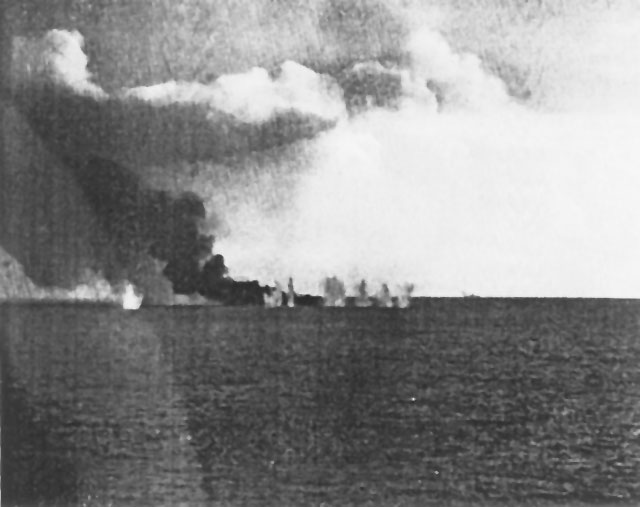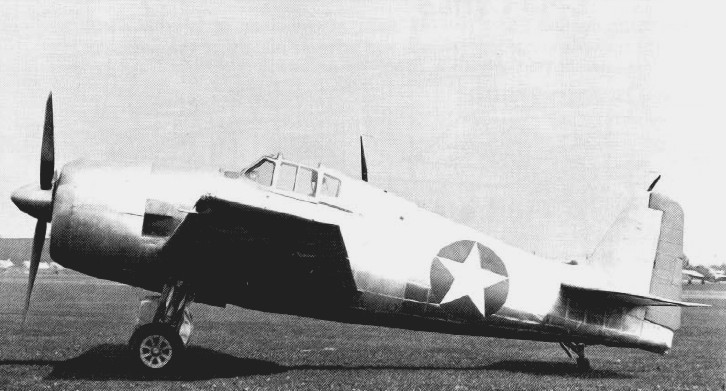|
Task Force 88 (Operation Dragoon)
Task Force 88 (TF88) was the escort carrier force, commanded by Rear Admiral Thomas Hope Troubridge of the Royal Navy, that supported Operation Dragoon, the Allied invasion of southern France. It was activated in August 1944, and dispersed on 29 August when the carrier force departed to operate in the Aegean. TF88 was a mixed task force of Royal Navy and United States Navy ships that was stationed off Provence. Its tasks were to achieve air superiority over the landing beaches, provide air support for the ground forces by suppressing enemy resistance and movement, destroying military infrastructure and artillery spotting for the naval bombardment. The TF 88 designation was later used for Operation Argus, an ocean-based US nuclear test series in the late 1950s. Task Force 88 order of battle Task Force 88 was made up of two naval groups, 88.1 and 88.2 with VOC-01, a observation composite squadron with 12 Grumman F6F Hellcat nightfighters operating out of Corsica Corsica ( , ... [...More Info...] [...Related Items...] OR: [Wikipedia] [Google] [Baidu] |
Escort Aircraft Carrier
The escort carrier or escort aircraft carrier (U.S. hull classification symbol CVE), also called a "jeep carrier" or "baby flattop" in the United States Navy (USN) or "Woolworth Carrier" by the Royal Navy, was a small and slow type of aircraft carrier used by the Royal Navy, the United States Navy, the Imperial Japanese Navy and Imperial Japanese Army Air Force in World War II. They were typically half the length and a third the displacement of larger fleet carriers, slower, more-lightly armed and armored, and carried fewer planes. Escort carriers were most often built upon a commercial ship hull, so they were cheaper and could be built quickly. This was their principal advantage as they could be completed in greater numbers as a stop-gap when fleet carriers were scarce. However, the lack of protection made escort carriers particularly vulnerable, and several were sunk with great loss of life. The light carrier (U.S. hull classification symbol CVL) was a similar concept to the e ... [...More Info...] [...Related Items...] OR: [Wikipedia] [Google] [Baidu] |
809 Naval Air Squadron
809 Naval Air Squadron (809 NAS) is a squadron of the Fleet Air Arm of the United Kingdom. It was first formed in 1941 and flew in the Soviet Union, the Mediterranean and the Far East during the Second World War. After active service during the Suez Crisis, 809 was disbanded in 1959. Reformed in 1963 to fly Blackburn Buccaneers, the squadron was disbanded briefly in 1965-66, and then again in 1978. A brief period during the Falklands War saw 809 reformed to bring Sea Harrier FRS.1 aircraft south to the UK task group and to fly from ''Illustrious''. In September 2013, it was announced that the first Royal Navy squadron equipped with the Lockheed Martin F-35B Lightning would be named 809 Naval Air Squadron with the nickname ''"Immortals"''. In 2016 it had been planned that the squadron would re-commission in April 2023 as the UK's second operational F-35B squadron after No. 617 Squadron RAF. However, as of 2021 it was no longer clear that this objective would be met and a spec ... [...More Info...] [...Related Items...] OR: [Wikipedia] [Google] [Baidu] |
F6F Hellcat
The Grumman F6F Hellcat is an American Carrier-based aircraft, carrier-based fighter aircraft of World War II. Designed to replace the earlier Grumman F4F Wildcat, F4F Wildcat and to counter the Japanese Mitsubishi A6M Zero, it was the United States Navy's dominant fighter in the second half of the Pacific War. In gaining that role, it prevailed over its faster competitor, the Vought F4U Corsair, which initially had problems with visibility and carrier landings. Powered by a Pratt & Whitney R-2800 Double Wasp, the same powerplant used for both the Corsair and the United States Army Air Forces (USAAF) Republic P-47 Thunderbolt fighters, the F6F was an entirely new design, but it still resembled the Wildcat in many ways. Some military observers tagged the Hellcat as the "Wildcat's big brother".Sullivan 1979, p. 4. The F6F made its combat debut in September 1943. It subsequently established itself as a rugged, well-designed carrier fighter, which was able to outperform the A6M Zer ... [...More Info...] [...Related Items...] OR: [Wikipedia] [Google] [Baidu] |
800 Naval Air Squadron
() , colors = , colors_label = , march = , mascot = , anniversaries = , equipment = , equipment_label = , battles = , battles_label = , decorations = , battle_honours = , battle_honours_label = , flying_hours = , website = , current_commander = , commander1 = , commander1_label = , commander2 = , commander2_label = , commander3 = , commander3_label = , commander4 = , commander4_label = , commander5 = , commander5_label = , commander6 = , commander6_label = , commander7 = , commander7_label = , commander8 = , commander8_label = , commander9 = , commander9_label = , notable_commanders = Lieutenant Commander Raymond Lygo (1954–55) , identification_symbol = , identification_symbol_label = , aircraft_attack = , aircraft_bomber = , aircraft_electronic = , aircraft_fighter = , aircraft_helicopter = , aircraft_helicopter_attack = , aircraft_helicopter_cargo = , aircraft_helicopter_multirole = , aircraft_helicopter_observation = , aircraf ... [...More Info...] [...Related Items...] OR: [Wikipedia] [Google] [Baidu] |
807 Naval Air Squadron
807 Naval Air Squadron (807 NAS) was a Naval Air Squadron of the Royal Navy. Second World War 807 Squadron was formed at RNAS Worthy Down in September 1940, equipped with Fairey Fulmar Is. Three were embarked on HMS ''Pegasus'', where they remained until February 1941, when the entire squadron embarked on for convoy duties. Re-equipped with Fulmar IIs in April 1941, 807 Squadron joined and saw action defending the Malta convoys between July and September. Many of the squadron's aircraft were lost in the sinking of ''Ark Royal'' in November 1941. Four surviving machines were flown off to North Front, Gibraltar. The squadron was gradually re-equipped with replacement Fulmars, which were joined by Sea Hurricanes, after which the squadron joined . In June 1942 the squadron flew off the carriers HMS ''Argus'' and to cover Operation Harpoon. 807 Squadron received Supermarine Seafires in June 1942, and rejoined HMS ''Furious'' in August. They took part in Operation Torch, the Nor ... [...More Info...] [...Related Items...] OR: [Wikipedia] [Google] [Baidu] |
HMS Hunter (D80)
USS ''Block Island'' (CVE-8) (originally AVG and then ACV) was an escort aircraft carrier that served during World War II. The ship was laid down on 15 May 1941 as ''Mormacpenn'' under Maritime Commission contract at Pascagoula, Mississippi, by Ingalls Shipbuilding, acquired by the United States Navy on 9 January 1943 and simultaneously transferred via the Lend-Lease program to the United Kingdom as ''Trailer''. On 11 January 1943, the ship was renamed HMS ''Hunter'' (D80) and commissioned by the Royal Navy. In March 1945 was attached to the 21st Aircraft Carrier Squadron. She participated in Operation Jurist and Operation Tiderace in August 1945, the reoccupation of Malaya and Singapore from the Japanese. The vessel was returned to United States' custody 29 December 1945 and sold into merchant service on 17 January 1947 as ''Almdijk''. In October 1965 the ship was sold for scrapping in Spain. Design and description There were eight s in service with the Royal Navy during the ... [...More Info...] [...Related Items...] OR: [Wikipedia] [Google] [Baidu] |
Supermarine Seafire
The Supermarine Seafire is a naval version of the Supermarine Spitfire adapted for operation from aircraft carriers. It was analogous in concept to the Hawker Sea Hurricane, a navalised version of the Spitfire's stablemate, the Hawker Hurricane. The name Seafire was derived from the abbreviation of the longer name Sea Spitfire.Andrews and Morgan 1987, p. 247. The idea of adopting a navalised carrier-capable version of the Supermarine Spitfire had been mooted by the Admiralty as early as May 1938. Despite a pressing need to replace various types of obsolete aircraft that were still in operation with the Fleet Air Arm (FAA), some opposed the notion, such as Winston Churchill, although these disputes were often a result of an overriding priority being placed on maximising production of land-based Spitfires instead. During 1941 and early 1942, the concept was again pushed for by the Admiralty, culminating in an initial batch of Seafire Mk Ib fighters being provided in late 1941 ... [...More Info...] [...Related Items...] OR: [Wikipedia] [Google] [Baidu] |
879 Naval Air Squadron
879 Naval Air Squadron (879 NAS) was a List of Fleet Air Arm aircraft squadrons, Naval Air Squadron of the Royal Navy's Fleet Air Arm that was active during the Second World War. It was formed in 1942, and from 1943 was equipped with Supermarine Seafire fighters, operating mainly in the Mediterranean Sea. It took part in the Operation Avalanche, Allied landings at Salerno, Italy in 1943 and Operation Dragoon, the Allied invasion of southern France. It was disbanded in 1944. Service 879 Squadron was formed on 1 October 1942 at RNAS St Merryn when it was split from 809 Naval Air Squadron, 809 Squadron. It was a carrier-based fighter squadron equipped with Fairey Fulmar two-seat fighters. The squadron moved to Old Sarum Airfield in November that year and carried training on army support operations, before moving to RNAS Stretton in March 1943 for re-equipping with Supermarine Seafire Ib fighters. More army-co-operation training followed at RAF Andover in June, with the squadron re-eq ... [...More Info...] [...Related Items...] OR: [Wikipedia] [Google] [Baidu] |
HMS Attacker (D02)
HMS ''Attacker'' (D02) was an American-built escort carrier that served with the Royal Navy during the Second World War. Converted from a merchantman under construction, she was commissioned by the United States Navy on 30 September 1942, as USS ''Barnes'' (CVE-7), a ; she was decommissioned and transferred to the Royal Navy on the same day under the Lend-Lease agreement. ''Attacker'' served throughout the war, first as a convoy escort in the Battle of the Atlantic. After further conversion by the Royal Navy in October 1943, into an assault carrier, the ship was active in the Mediterranean, and later the war in the Pacific. In late August 1945, ''Attacker'' witnessed the Japanese surrender of Penang, in Malaya, as part of Operation Jurist. Construction The merchantman ''Steel Artisan'' was laid down on 17 April 1941, under a Maritime Commission contract, MC hull 171, by Western Pipe and Steel Company of San Francisco. She was renamed ''Barnes'' (AVG-7) on 3 September 1941, and ... [...More Info...] [...Related Items...] OR: [Wikipedia] [Google] [Baidu] |
VF-74
VF-74, Fighter Squadron 74, ''Be-Devilers'' was an aviation unit of the United States Navy in service from 1944 to 1994. Originally established as VBF-20 on 16 April 1945, it was redesignated as VF-10A on 15 November 1946, redesignated as VF-92 on 12 August 1948, redesignated as VF-74 on 15 January 1950 and disestablished on 30 April 1994. It was the third US Navy squadron to be designated as VF-74. History VBF-20 was established on 16 April 1945 flying the F4U-1 Corsair from NAS Wildwood in New Jersey. After six months they transitioned to the F6F Hellcat but soon changed to F8F Bearcat. On 15 November 1946 their designation was changed to VF-10A and was part of Carrier Air Group 9 on board and made their first deployment to the Mediterranean between February and June 1948. Before the cruise VF-10A had shifted to their new shore base of Naval Auxiliary Air Station Charlestown, Rhode Island. At the same time, the squadron had adopted their devil's insignia created by Ensign John ... [...More Info...] [...Related Items...] OR: [Wikipedia] [Google] [Baidu] |

_1942.jpg)




%2C_circa_in_late_1945.jpg)